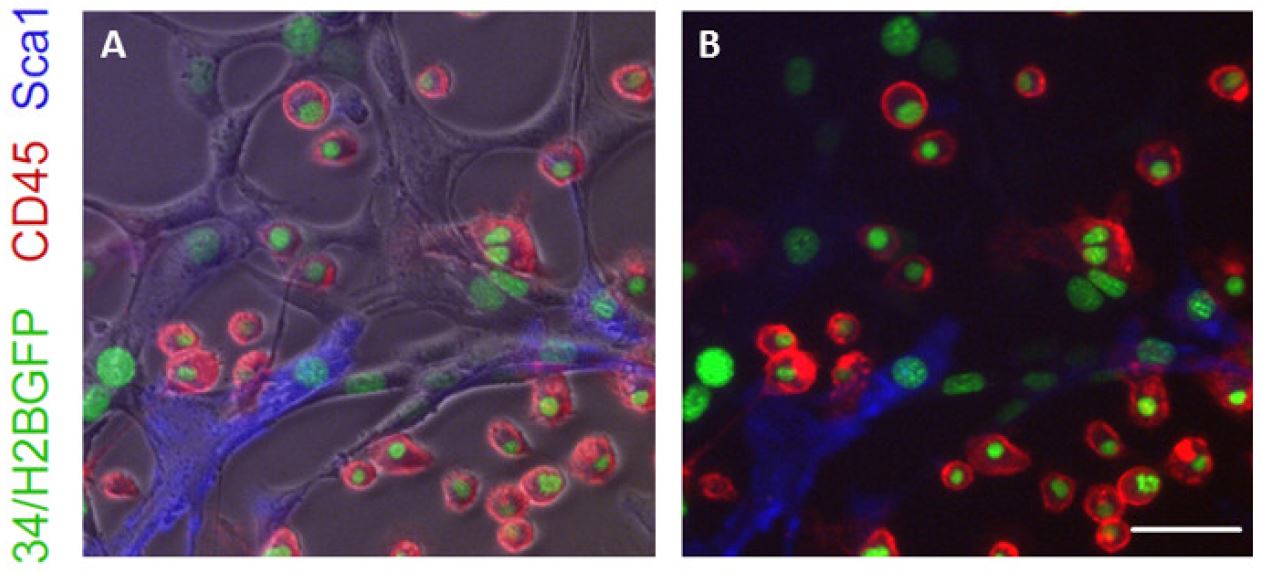Publications
Reprogramming Mouse Embryonic Fibroblasts with Transcription Factors to Induce a Hemogenic Program

December 16, 2016 / Issue 118
Journal of Visualized Experiments: Jove
Michael G Daniel, Carlos-Filipe Pereira, Jeffrey M Bernitz, Ihor R Lemischka, Kateri Moore
Abstract
This protocol details the induction of a hemogenic program in mouse embryonic fibroblasts (MEFs) via overexpression of transcription factors (TFs). We first designed a reporter screen using MEFs from human CD34-tTA/TetO-H2BGFP (34/H2BGFP) double transgenic mice. CD34+ cells from these mice label H2B histones with GFP, and cease labeling upon addition of doxycycline (DOX). MEFS were transduced with candidate TFs and then observed for the emergence of GFP+ cells that would indicate the acquisition of a hematopoietic or endothelial cell fate. Starting with 18 candidate TFs, and through a process of combinatorial elimination, we obtained a minimal set of factors that would induce the highest percentage of GFP+ cells. We found that Gata2, Gfi1b, and cFos were necessary and the addition of Etv6 provided the optimal induction. A series of gene expression analyses done at different time points during the reprogramming process revealed that these cells appeared to go through a precursor cell that underwent an endothelial to hematopoietic transition (EHT). As such, this reprogramming process mimics developmental hematopoiesis “in a dish,” allowing study of hematopoiesis in vitro and a platform to identify the mechanisms that underlie this specification. This methodology also provides a framework for translation of this work to the human system in the hopes of generating an alternative source of patient-specific hematopoietic stem cells (HSCs) for a number of applications in the treatment and study of hematologic diseases.